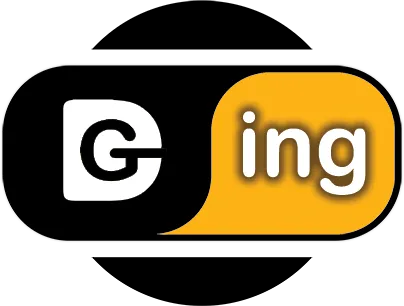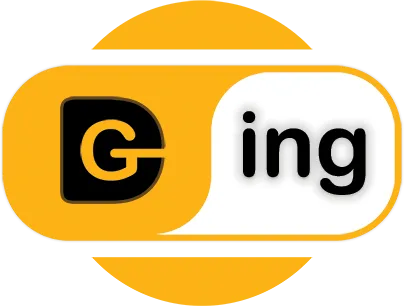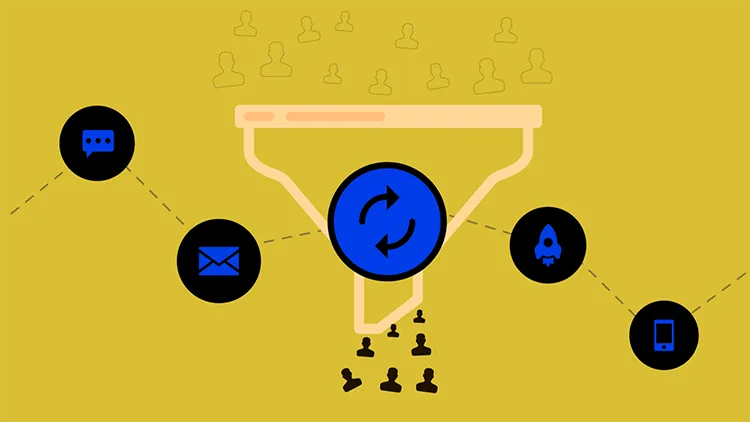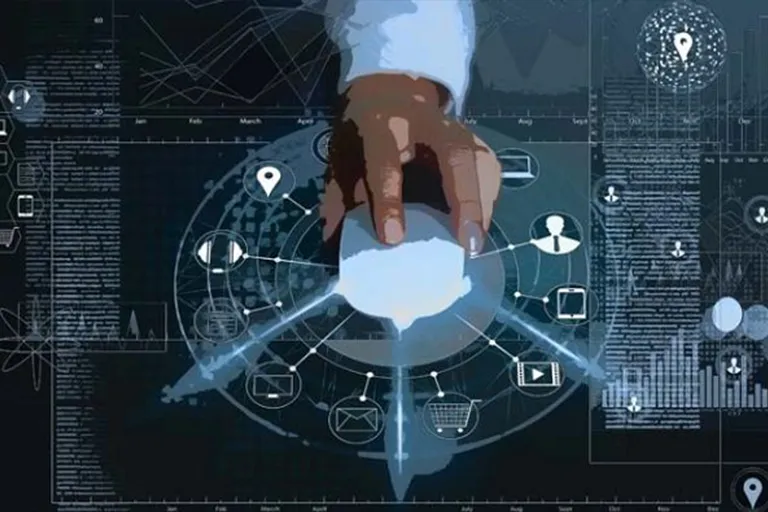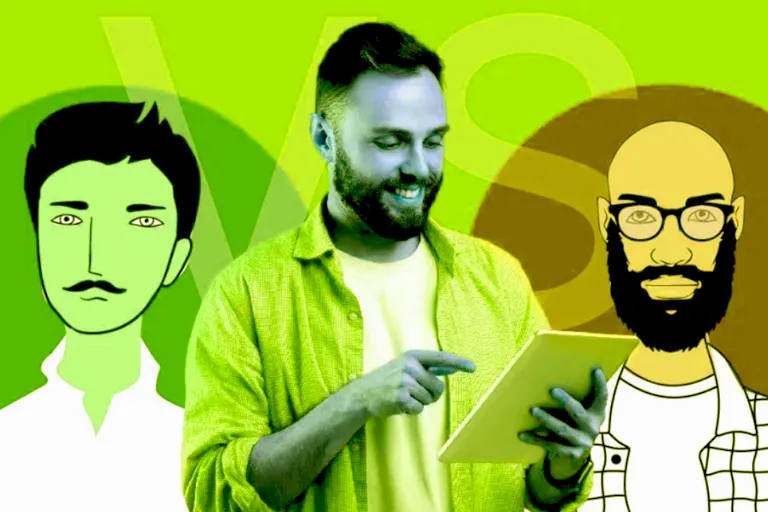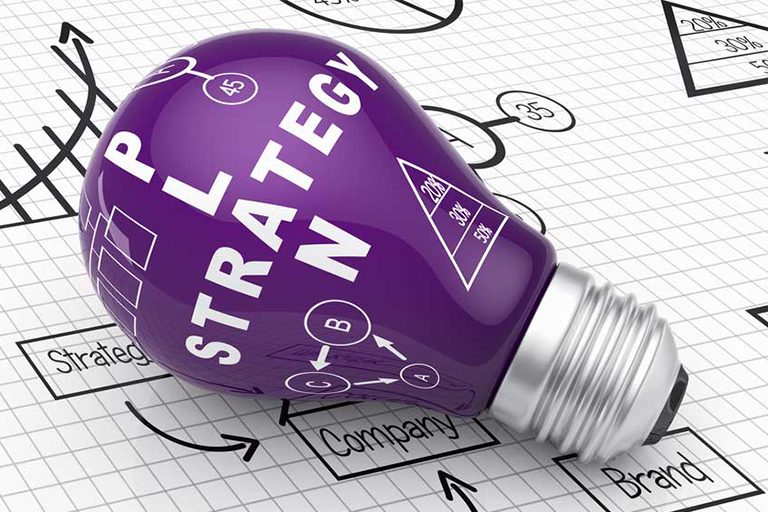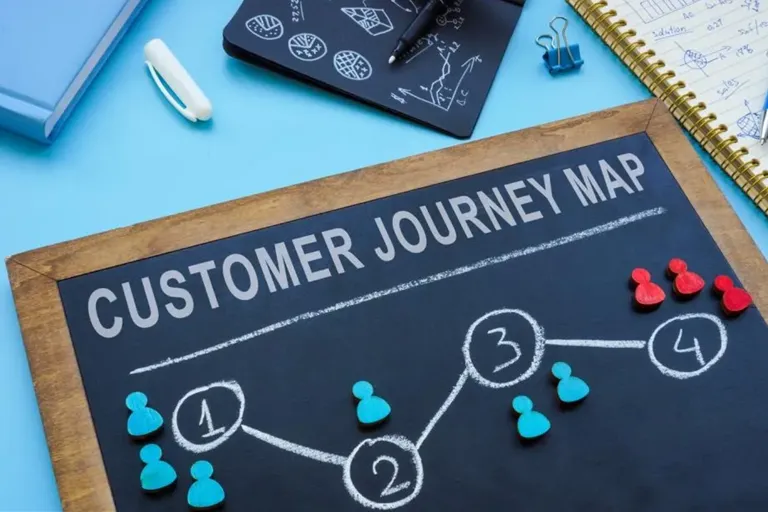The content marketing funnel or more generally the sales funnel in digital content marketing is a tool that helps you think more and better about the gradual evolution of the customer’s relationship with you.
It can be assumed that each audience enters from the beginning of the funnel and is gradually targeted towards the bottom.
Consider a person who learned about your products a few days ago through content marketing and bought from you today.
Try to look at your business through his eyes.
Probably, he first saw your article while searching on Google or while surfing on social networks . Maybe you caught his attention at the first meeting. Maybe he didn’t take you seriously at all and after encountering other content from you two or more times, his curiosity was aroused.
He probably checked out your profile or took a look at the contact us section of your site after getting curious.
Maybe at the same moment and maybe during the following days, he visited you again and checked one of your products more seriously. Maybe, from the beginning, he came to your products on the recommendation of one of his friends who was your customer, and because of the previous acquaintance, there was no need for you to win his trust.
Content marketing sales funnel
The content marketing funnel or more generally the sales funnel in digital marketing is by no means a new thing and anyone who has worked in marketing , sales and advertising has encountered these types of funnels many times. But when you work in the field of content marketing , it is important that you also have your own sales funnel and with the help of it, you can analyze your situation better and more accurately.
One of the simplest models for a content marketing funnel is as follows:
- First part: awareness – the entrance part of the funnel
- Second part: evaluation – middle part of the funnel
- Part Three: Action – Bottom of Funnel
There are three main parts in this funnel:
1- The entrance part of the sales funnel – awareness
A large part of your content audience is in the entry part of the funnel.
They see and read your content, or maybe they hear and realize you exist. At this stage, nothing more happens than becoming aware; Because of this, sometimes it is described with Awareness and sometimes with Attract, or the initial attraction stage of the audience.
Most of your content audience will never get past this stage. But still, you have a responsibility to devote some of your time and resources to creating content for this group. Because most of your customers and final audience will join you from this path.
Landing pages on websites and highlighted stories on Instagram can usually be placed in this category.
Many contents for the audience of this layer can be educational, but remember to use risk-free messages and content in this layer.
In other words, except for time and attention, don’t ask the audience for anything that he considers as risk and cost.
Because if you ask the audience for contact information at the same entrance of the funnel or, for example, request that they visit your site from your Instagram, you have imposed additional trouble and cost on them and they may not enter your funnel.
2- The middle part of the sales funnel – evaluation
If you can satisfy and convince the audience at the entrance of the funnel, they may move towards the middle parts of the funnel.
At this stage, the audience passes through the layer of awareness and reaches the evaluation level. Now he wants to know exactly which person, group or business he is dealing with and what is the difference between the producer of this content and other similar collections.
Assuming you’re offering your content through a website, entering the middle of the funnel can mean:
- The contact goes to the About Us or Contact Us page and checks it out.
- The audience may read the FAQ page to get familiar with the general atmosphere of your work
- The audience may sign up for your site’s newsletter.
- The audience is ready to push themselves and see and review your long content.
- The audience spends time comparing you to your competitors.
In general, it can be said that in the second stage, we are facing an audience or an interested customer. Someone who typically uses your content for evaluation, learning, or entertainment.
3- The lower part of the sales funnel – action
At this stage, the audience trusts you and is ready to have a more serious relationship with you.
The form of this relationship is different depending on the type of your activity. For example, a more serious relationship for a shared service can be the conversion of the audience into a subscriber. Or for a physical store, paying money and buying the first product can be considered a sign of the beginning of a serious relationship.
The content used in this step may be product price lists, invitations to physical presence in the store , or product and service specification brochures. In short, anything that is the last step of a call to action.
Content evaluation
The most important thing to do using this tool is to evaluate the contribution of different content:
Do you have any words to say to someone who has just reached you and is not ready to take any kind of cost and risk? Is there content that will satisfy and delight the transient audience and attract their attention?
Do you have content for those who are one step closer to you, but are not yet your real customers and audience? Have you included content that will help them evaluate you more easily?
For someone who is in the final stages of taking a serious action, have you provided content that can lead them to action?
If you don’t make these checks consciously, you may find later that you’ve overemphasized your bottom-of-funnel content. For example, from the first stage when an audience meets you, you talk about prices, purchases, discounts, and auctions.
Or you may find that you’ve produced a lot of content for the first and second layers, but in the end, there’s little to encourage the audience to take a final action somewhere. In fact, the audience comes and reaches the middle layer of the funnel; But he is so satisfied with your content there that he forgets that there is a third stage in this funnel. For example, have you ever collected your information from a site while shopping and then made a purchase on another site?
Therefore, you should consciously and carefully think about the content funnel and see, as a content strategist or as a designer of a content marketing campaign , what share of content do you consider for each of these three categories ?
The importance of indicators
The indicators section is particularly important because you must be able to convert these qualitative discussions into numbers and figures. Therefore, it is necessary to determine a clear and precise answer to the following questions:
- How and by what criteria do you count the entrance audience of the funnel?
- What do you think is the final course of action?
- With what indicators do you consider the middle layer?
This funnel is just a simple tool for basic activity analysis. Otherwise, we all know that with the first purchase, everything just begins, and maintaining the audience or customer and ensuring his satisfaction is a very big and profitable challenge.
If we were to deal with customer relationship management here , after the action stage, we should have mentioned the repetition of action and loyalty and the defense and promotion of the brand and discussions like these.
But in this article, the goal was simply to get to know the basic structure of the simplest content marketing sales funnel model.
Have you ever visited websites or social networks , and come across a space where the content presented in it has taken a group of audience less seriously? We are happy to share your comments with us.
